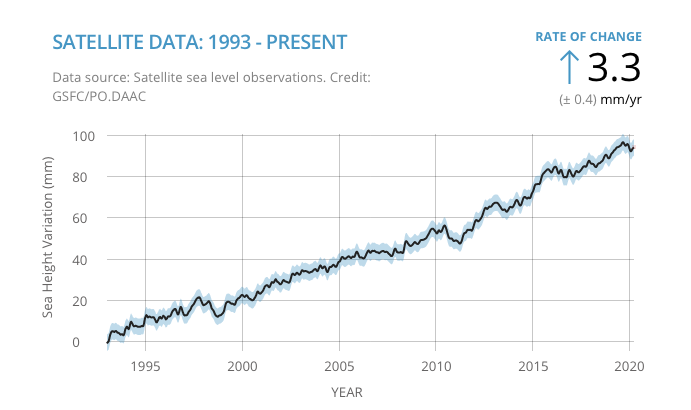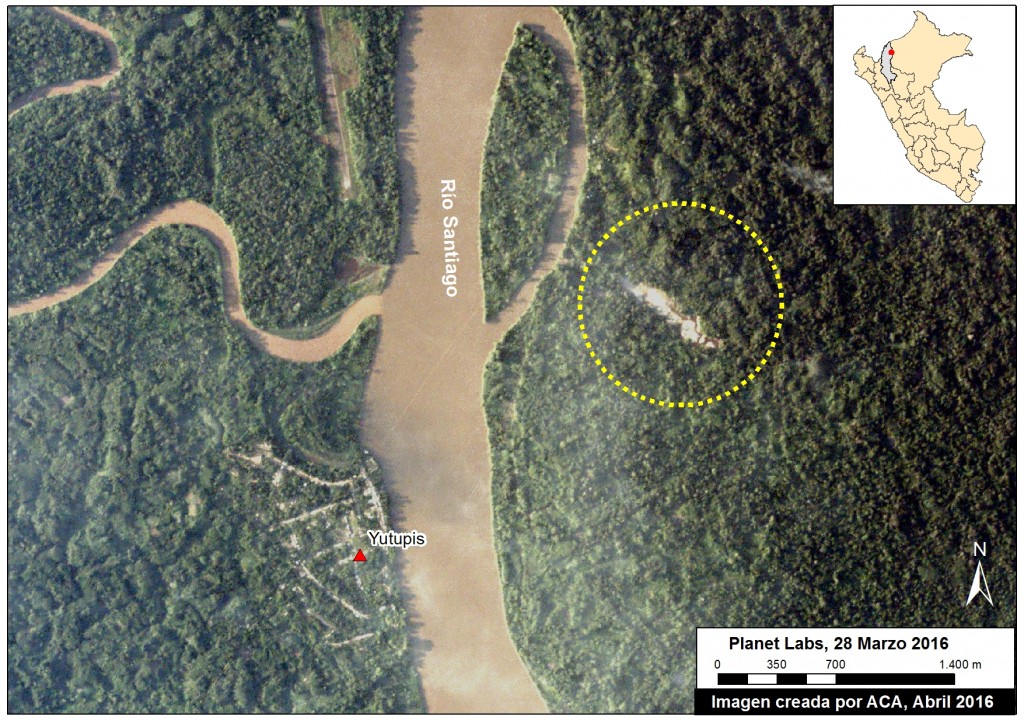The Increasing Danger Of Rising Global Sea Levels

Table of Contents
Causes of Rising Global Sea Levels
Several interconnected factors contribute to the concerning rise in global sea levels. Understanding these causes is crucial for developing effective mitigation strategies.
Thermal Expansion
As global temperatures rise due to climate change, the ocean absorbs a significant amount of this excess heat. This leads to thermal expansion, causing water molecules to move further apart and increasing the overall volume of the ocean. Studies show that thermal expansion accounts for a substantial portion of observed sea level rise, with data from NASA’s GRACE satellite mission providing compelling evidence of this effect. For example, a 1°C increase in ocean temperature can lead to a measurable increase in sea level.
Melting Glaciers and Ice Sheets
The melting of glaciers and ice sheets in Greenland and Antarctica is a major contributor to rising global sea levels. The immense volume of ice stored in these regions represents a significant potential for sea level rise. Scientific research consistently shows an acceleration in the melting rate, particularly in Greenland, where warmer air and ocean temperatures are destabilizing ice sheets. The contribution from Antarctica is also becoming increasingly significant, with alarming rates of ice shelf disintegration observed in recent years.
- Greenland's ice sheet melt contributes significantly to sea level rise.
- Accelerated melting in Antarctica poses a substantial threat.
- Data from satellite observations confirm the accelerating melting trends.
Changes in Groundwater Storage
Human activities significantly impact groundwater storage. Excessive groundwater pumping for agriculture and urbanization lowers the water table, ultimately leading to a net transfer of water into the oceans and contributing to sea level rise. This effect, while less dramatic than glacial melt, is a significant factor, particularly in densely populated coastal regions.
Land Subsidence
Land subsidence, the gradual sinking of land, exacerbates the impact of rising sea levels. This can be caused by natural geological processes or human activities like groundwater extraction and oil/gas extraction. Areas experiencing land subsidence are particularly vulnerable to flooding and coastal erosion, as the relative sea level rise is amplified.
Consequences of Rising Global Sea Levels
The consequences of rising global sea levels are multifaceted and devastating, impacting both human populations and the environment.
Coastal Erosion and Flooding
Increased frequency and intensity of coastal erosion and flooding are already evident globally. Low-lying coastal areas are particularly vulnerable, experiencing more frequent and severe inundation events. Examples include the increased frequency of flooding in Bangladesh and the erosion of shorelines in the Pacific Islands.
Loss of Habitats and Biodiversity
Rising sea levels directly threaten coastal ecosystems such as mangroves, salt marshes, and coral reefs. These vital habitats support a high level of biodiversity and provide crucial ecosystem services. The loss of these habitats leads to biodiversity loss, impacting numerous species and disrupting delicate ecological balances.
Displacement of Populations
Millions of people living in low-lying coastal regions face the imminent threat of displacement due to rising sea levels and increased flooding. This will lead to significant challenges in terms of relocation, infrastructure, and resource management. The term "climate refugees" is increasingly used to describe those forced to leave their homes due to climate-related impacts, including sea level rise.
Saltwater Intrusion
Saltwater intrusion into freshwater sources is another severe consequence. This contamination affects agriculture, drinking water supplies, and overall water security, particularly in coastal communities heavily reliant on groundwater.
Increased Storm Surges
Rising sea levels act as a multiplier for the impact of storm surges. Higher baseline sea levels mean that storm surges reach further inland and cause greater damage and loss of life.
Mitigating the Effects of Rising Global Sea Levels
Addressing the challenges posed by rising global sea levels requires a multi-pronged approach focusing on both mitigation and adaptation.
Reducing Greenhouse Gas Emissions
The most crucial step is to drastically reduce greenhouse gas emissions to slow the rate of sea level rise. This involves transitioning to renewable energy sources, improving energy efficiency, and adopting sustainable land-use practices. International agreements like the Paris Agreement are vital in coordinating global efforts.
Investing in Coastal Defenses
Investing in coastal defenses, such as seawalls, levees, and managed retreat strategies, can help protect coastal communities from the immediate impacts of rising sea levels. However, these are often costly and may not be sustainable long-term solutions.
Sustainable Coastal Management
Implementing sustainable coastal zone management practices is crucial for reducing vulnerability to sea level rise. This includes protecting and restoring coastal ecosystems like mangroves and wetlands, which act as natural buffers against storms and erosion.
Adaptation Strategies
Adaptation strategies are essential to help communities cope with the unavoidable impacts of sea level rise. This includes developing early warning systems for floods and storms, improving infrastructure resilience, and implementing managed relocation programs.
Global Collaboration and Policy
Effective action requires strong global collaboration and supportive policies. International cooperation is essential for sharing knowledge, coordinating efforts, and implementing effective mitigation and adaptation measures.
Conclusion: Addressing the Danger of Rising Global Sea Levels – A Call to Action
The evidence is clear: rising global sea levels pose a significant and escalating threat to the planet. The consequences, ranging from coastal erosion and displacement to biodiversity loss and water scarcity, demand immediate and decisive action. Mitigation efforts focused on reducing greenhouse gas emissions are crucial for slowing the rate of sea level rise. Simultaneously, adaptation strategies are necessary to help communities cope with the unavoidable impacts. We must act now to mitigate the dangers of rising global sea levels. Learn more about the issue and take action today! Support organizations working to address climate change and advocate for policies that combat rising global sea levels. The future of coastal communities and the planet depends on it.

Featured Posts
-
 Resi Awards 2025 Celebrating Our Winners
May 11, 2025
Resi Awards 2025 Celebrating Our Winners
May 11, 2025 -
 Perus Emergency Mining Ban Impacts Gold Production By 200 Million
May 11, 2025
Perus Emergency Mining Ban Impacts Gold Production By 200 Million
May 11, 2025 -
 Ines Reg Et Chantal Ladesou Une Nouvelle Polemique Enflamme La Toile
May 11, 2025
Ines Reg Et Chantal Ladesou Une Nouvelle Polemique Enflamme La Toile
May 11, 2025 -
 L Habilete De Thomas Mueller Face Aux Questions D Un Journaliste Du Bayern Munich
May 11, 2025
L Habilete De Thomas Mueller Face Aux Questions D Un Journaliste Du Bayern Munich
May 11, 2025 -
 Henry Cavill As Captain Britain Fake Trailer Takes The Internet By Storm
May 11, 2025
Henry Cavill As Captain Britain Fake Trailer Takes The Internet By Storm
May 11, 2025
